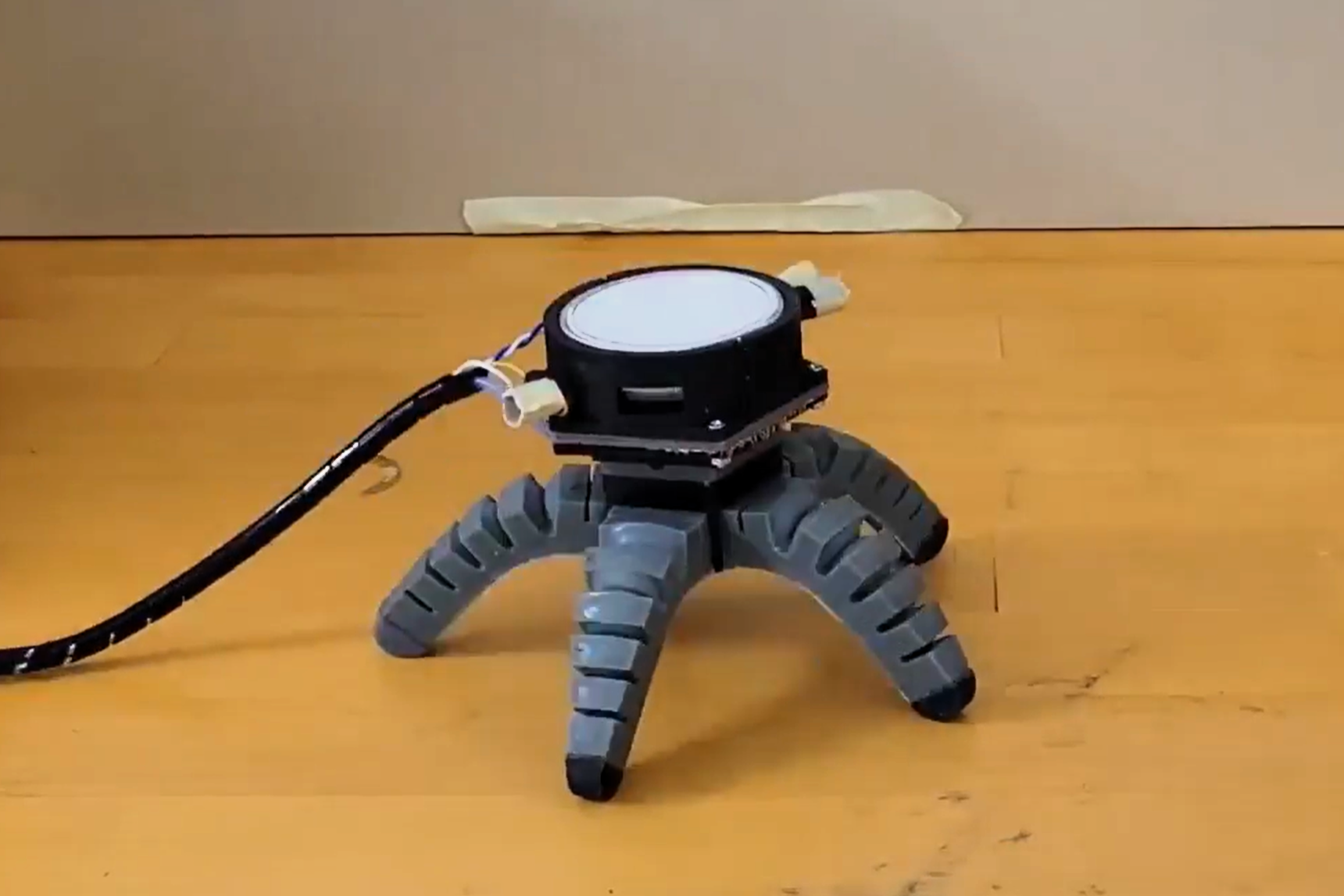Engineers have created a new type of robot that places living fungi behind the controls.
The biohybrid robot uses electrical signals from an edible type of mushroom called a king trumpet in order to move around and sense its environment.
Developed by an interdisciplinary team from Cornell University in the US and Florence University in Italy, the machine could herald a new era of living robotics.
“Living systems respond to touch, they respond to light, they respond to heat, they respond to even some unknowns, like signals,” said Anand Mishra, a research associate in the Organic Robotics Lab at Cornell.
“That’s why we think, OK, if you wanted to build future robots, how can they work in an unexpected environment? We can leverage these living systems, and any unknown input comes in, the robot will respond to that.”

Different inputs, such as ultraviolet light, resulted in different outcomes for the way the robot moved. A video of one of the mushroom-controlled robots shows it moving slowly across a surface by pumping its robotic legs. Another biohybrid robot uses a wheeled system in order to move around.
Combining this mobility with the fungi’s ability to sense chemical and biological signals could prove useful in a range of applications, according to the researchers.
“By growing mycelium into the electronics of a robot, we were able to allow the biohybrid machine to sense and respond to the environment,” said Rob Shepherd, a professor of mechanical and aerospace engineering at Cornell.
“The potential for future robots could be to sense soil chemistry in row crops and decide when to add more fertiliser, for example, perhaps mitigating downstream effects of agriculture like harmful algal blooms.”
Details of the biohybrid robot were published in the journal Science Robotics, in a study titled ‘Sensorimotor control of robots mediated by electro-physiological measurements of fungal mycelia’.
It is not the first time a living organism has been placed inside a robot body, though the use of mushrooms could offer a major breakthrough in the field of biohybrid robotics due to their ability to grow and survive in harsh conditions.
Previous experiments have included an artificial worm brain placed inside a Lego robot, which was able to recreate the creature’s movements and intentions.
Earlier this year, researchers from Massachusetts Institute of Technology (MIT) created a machine that was integrated with living muscle tissue in order to sense and adapt to its environment.

